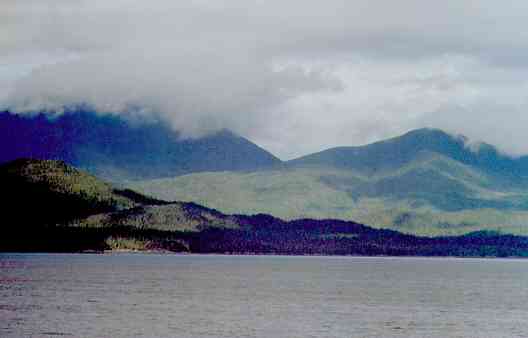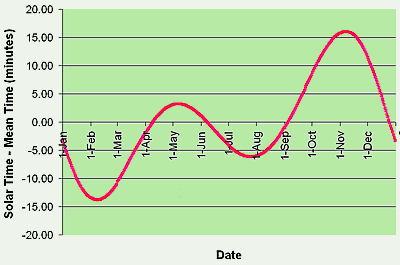 |
 |
| Home | Welcome | What's New | Site Map | Glossary | Weather Doctor Amazon Store | Book Store | Accolades | Email Us |
 | |||||||||||||||||||||||
Weather Almanac for November 2001ENTERING THE DARK DAYSWhen I wrote this essay, we were about to make the switch from daylight savings time back to standard time across most of North America. Here in Victoria, British Columbia, that means for me that dinner will now be prepared and served after dark, but I will again arise to a lighter morning (for at least a few weeks). The event has further significance because in November, those of us residing in the non-tropical (and high polar) latitudes of the Northern Hemisphere also enter into the darkest quarter of the year -- solar winter. Add the onset of the peak rainy season for those of us on the North American Pacific Coast to the annual winter low-sun period, and you can see why we on Vancouver Island call these days "The Dark Days."  The total hours of potential daylight will continue to slowly decrease for another seven weeks or so before bottoming out at the Winter Solstice, the shortest day of the year, before again slowly increasing. Logically, we would expect that the solstice day, being the shortest daylight period, would also be the day with the latest sunrise and earliest sunset times as well. This, however, is not the case. We find the earliest sunset occurring in early December (December 8 for regions around latitude 40 deg N) and the latest sunrise coming about a month later in early January (January 5 around latitude 40 deg N). These differences are caused by the variation in the sun's declination (its angular distance above or below the equator, which changes on a yearly cycle) and factors related to earth's orbital movement and rotation relative to the sun. The Tug between Solar Declination and the Equation of TimeTo account for the effects of orbital motion and earth rotation, the basic equations that astronomers and time keepers use to calculate sunrise and sunset times must be adjusted using the Equation of Time. The Equation of Time has two components. The first accounts for the fact the plane of the Earth's equator is inclined to the plane of the Earth's orbit around the Sun. The second component is due to the orbit of the Earth around the Sun being an ellipse and not a circle. The Equation of Time describes the annual variations in the time of the Sun's transit across a time zone's central meridian (sundial or solar noon) compared to our standard 24-hour-per-day clocks; that is, the difference in minutes between 12:00 noon on a clock and the actual time of the Sun's position directly overhead (solar noon). The difference in time between successive transits of the Sun, which defines the length of a solar day, varies perceptibly over the year, caused by the complexities of Earth orbital movements. [For more details, see the Royal Observatory Greenwich site discussion on The Equation of Time.]  The impact of the Equation of Time influence makes the solar day longer than 24 hours from mid-November to early February, reaching a maximum in late December of about an additional 30 seconds. During the period from early December to early January (exact dates given herein are for latitude 40 deg N), the Equation of Time has a greater impact on determining sunrise and sunset times than the solar declination, day-to-day changes in which are now minimal as the sun "slows" to solstice. In the weeks just prior to the Winter solstice, the Equation of Time and declination effects work in opposite directions on the time of sunset. The declination pulls it earlier, as we expect, while the Equation of Time pushes it later. On 8 December the Equation of Time becomes dominant, and sunsets start occurring later. Meanwhile, both effects are pushing sunrise later and later. Following the solstice, the situation reverses, and both effects now combine to push sunset later in the day. However, on the other side of day, the declination influence works to pull sunrise earlier while the Equation of Time effect continues to push it later. The Equation of Time prevails until 5 January, when the declination again dominates, and sunrises begin to occur earlier. As a result, 5 January is the date of latest sunrise around latitude 40 deg N. Pacific Coast Dark DaysFor those of us living along the northern Pacific Coast of Canada and the US - from Oregon, across Washington and British Columbia, and into Alaska, a region I will hereafter refer to as the Pacific Northwest - these dark days have an added emphasis. The dark period of the annual solar cycle coincides with our annual rainy season. In the Pacific Northwest, rainy weather predominates from late October to February as a nearly continual succession of storms is spawned in the Gulf of Alaska. These storms spin across the now un-Pacific Ocean on a collision course with the continent and its large offshore islands (such as the Queen Charlotte Islands and Vancouver Island).
Rainfalls associated with these storms can drench portions of the region with as much as 2000 mm (79 inches) in a single month. Where the moist marine collides with cold arctic air escaping westward through the mountain gaps from the cold continental interior, snow falls and accumulates to incredible depths, thus making outstanding ski country in the region's many mountains. To give you a taste of the amount the precipitation that can fall as rain or snow during the Pacific Northwest wet season, here are a few extreme situations:
While storm frequency further east - e.g., around Colorado, the Great Lakes, New England and the Maritime Provinces - is also high during this time of year, their storms are usually separated by a few days of clear, albeit very cold, weather. Along the Pacific Northwest, however, precipitation may be recorded in many major population centres on more than sixty percent of the days from 1 November to 31 January, and they are generally separated only by continued grey skies or a few hours of clearing. The situation is more extreme along the western mountain slopes and inter-mountain valleys, where the percentage of rainy days often exceeds ninety percent. The average number of wet days for several major cities in the region during the solar winter period is given here.
A Psychological Dark Time?Needless to say, the combination of low annual sunlight potential and frequent grey and rainy skies makes the Pacific Northwest particularly unsuited for those of us who suffer from some level of seasonal affect disorder or SAD, caused by the low natural ambient light. For example, Seattle's skies are clear for less than nine percent of the time from November through January. We rejoice at even a few hours of bright (using the term loosely) sun that on occasion we are blessed with during these months. (For more on SAD, click here.)
"A steady wind-driven rain composes music for the psyche. It not only nurtures and renews, it consecrates and sanctifies. It whispers in secret languages about the primordial essence of things." "In the deepest darkest heart of winter, when the sky resembles bad banana baby food for months on end and the witch measles that meteorologists call drizzle are a chronic gray rash on the skin of the land, folks all around me sink into a dismal funk. Many are depressed, a few actually suicidal. But I, I grow happier with each fresh storm, each thickening of the crinkly stratocumulus." In an essay entitled "Why I Love Northwestern Washington," he concluded: "Yes, I am here for the weather. And when I'm lowered at last into a pit of marvelous mud, a pillow of fern and skunk cabbage beneath my skull, I want my epitaph to read, IT RAINED ON HIS PARADE. AND HE WAS GLAD!" I do not share Robbins' view, however, and often find myself wishing to again return to the Great Lakes region where crisp, cold, clear days divide winter storm events. I miss too the anticipation of the first snowfall and first blizzard, the latter a remnant memory from my youth of those glorious "snow day" school holidays. Reality quickly returns, however, when my memories next turn to driving in such conditions, the hours stuck in traffic, the fears of slick pavements. On the road, I will take rain over snow any day. To complete this piece, I had to turn on the reading light - the darkness combination of a day of heavy rains and dwindling afternoon sunlight, a reminder the dark days of solar winter that await. Wake me along with the groundhog on February 2nd when solar spring blossoms again forth. Learn More From These Relevant Books
|
|||||||||||||||||||||||
 |
To Purchase Notecard, |
Now Available! Order Today! | |
 |
 |
NEW! Now |
The BC Weather Book: |


